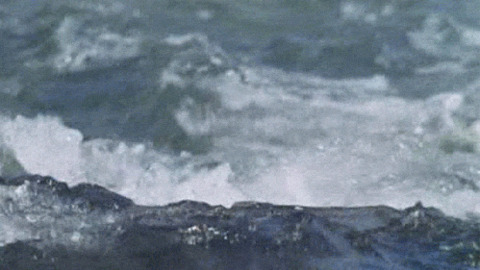
In other words, not only are large waves bigger than small ones, they are also generally more than twice as steep, and therefore many times more impressive. Small waves (amplitudes under a metre) tend to have relatively shallow slopes (amplitude is 3% to 4% of wavelength), while larger waves (amplitudes over 10 m) have much steeper slopes (amplitude is 6% to 7% of wavelength). In the open ocean, with strong winds (92 km/h) that blow for at least 69 hours, the waves will average nearly 15 m high and their wavelengths will be over 200 m. On a large body of water (the ocean or a very large lake) with a fetch of 139 km and winds of 37 km/h, the waves will develop fully in 10 hours the average amplitude will be around 1.5 m and average wavelength around 34 m. In a situation where the fetch is short (say 19 km on a lake) and the wind is only moderate (19 km/h), the waves will develop fully within 2 hours, but they will remain quite small (average amplitude about 27 cm, wavelength 8.5 m). The typical sizes and speeds of waves in situations where they have had long enough to develop fully are summarized in Table 17.1. Figure 17.2 The parameters of water waves The important parameters of a wave are its wavelength (the horizontal distance between two crests or two troughs), its amplitude (the vertical distance between a trough and a crest), and its velocity (the speed at which wave crests move across the water) (Figure 17.2).


The stronger the wind, the longer it blows, and the larger the area of water over which it blows (the fetch), the larger the waves are likely to be.

Waves form on the ocean and on lakes because energy from the wind is transferred to the water.


 0 kommentar(er)
0 kommentar(er)
